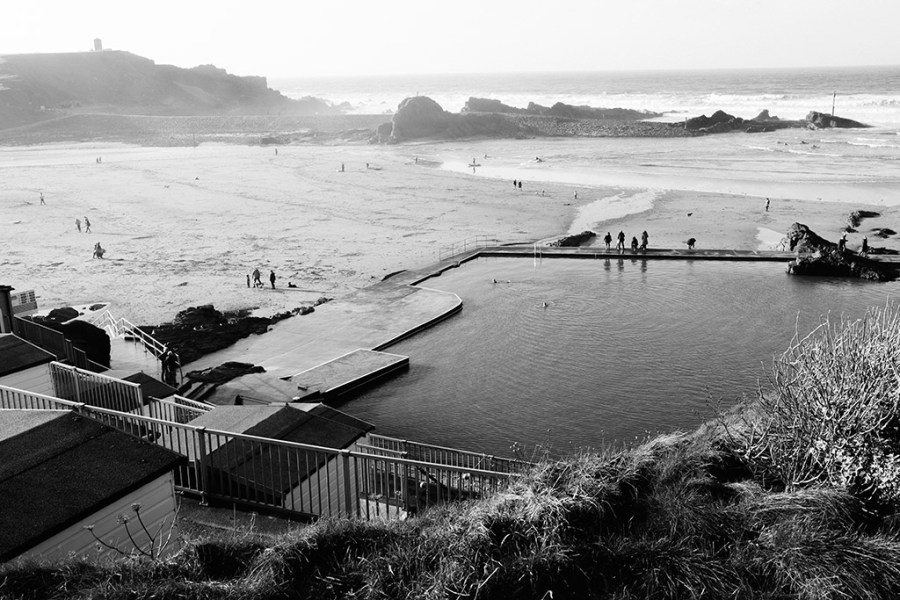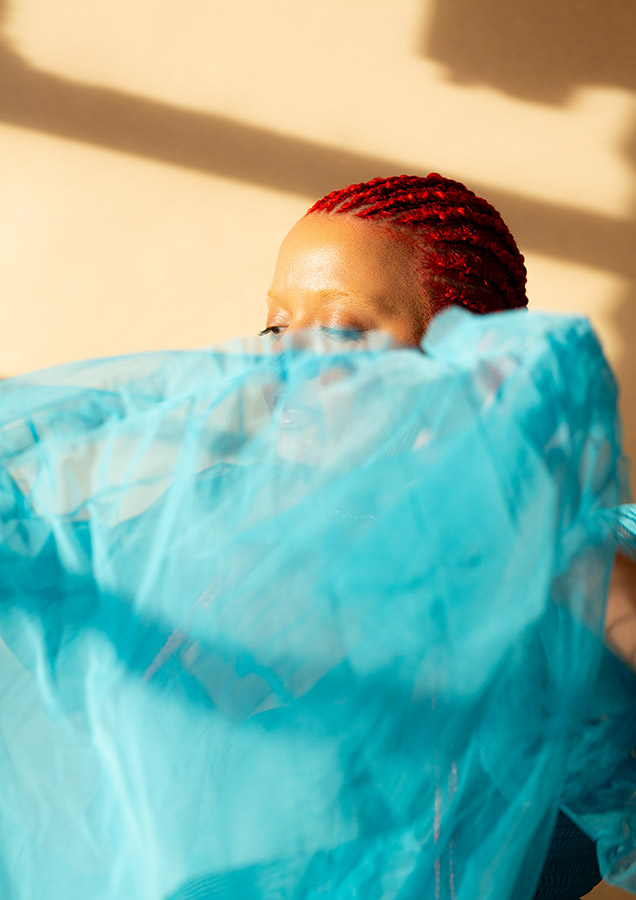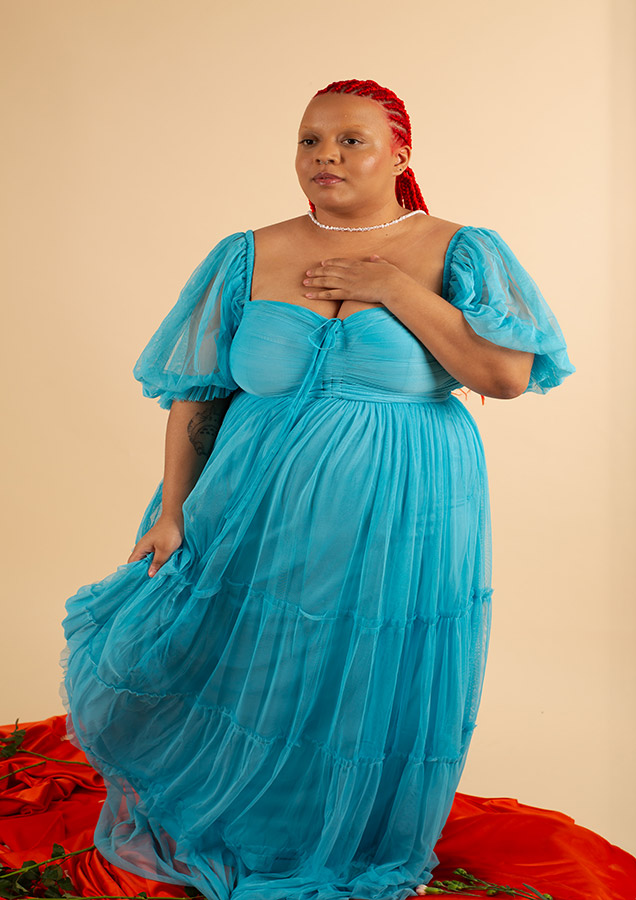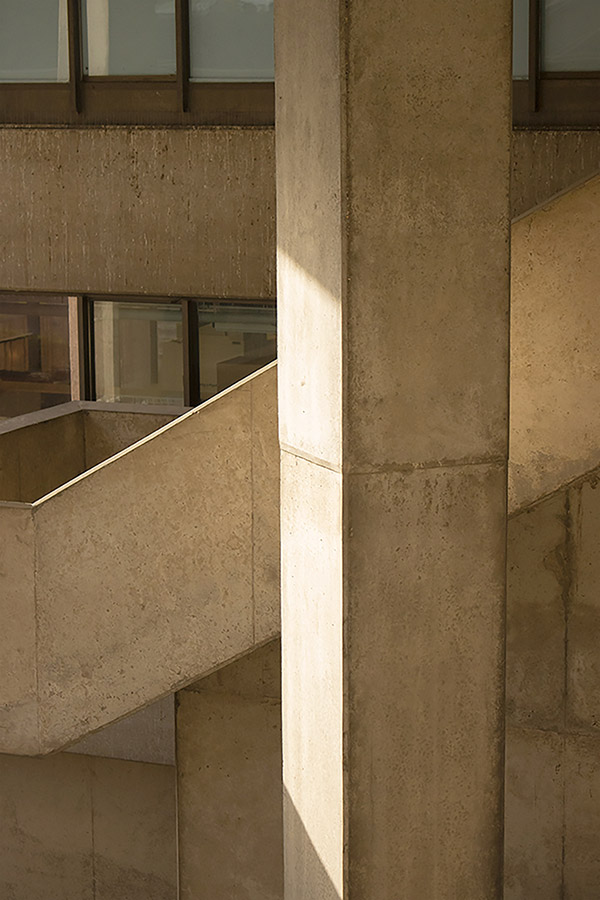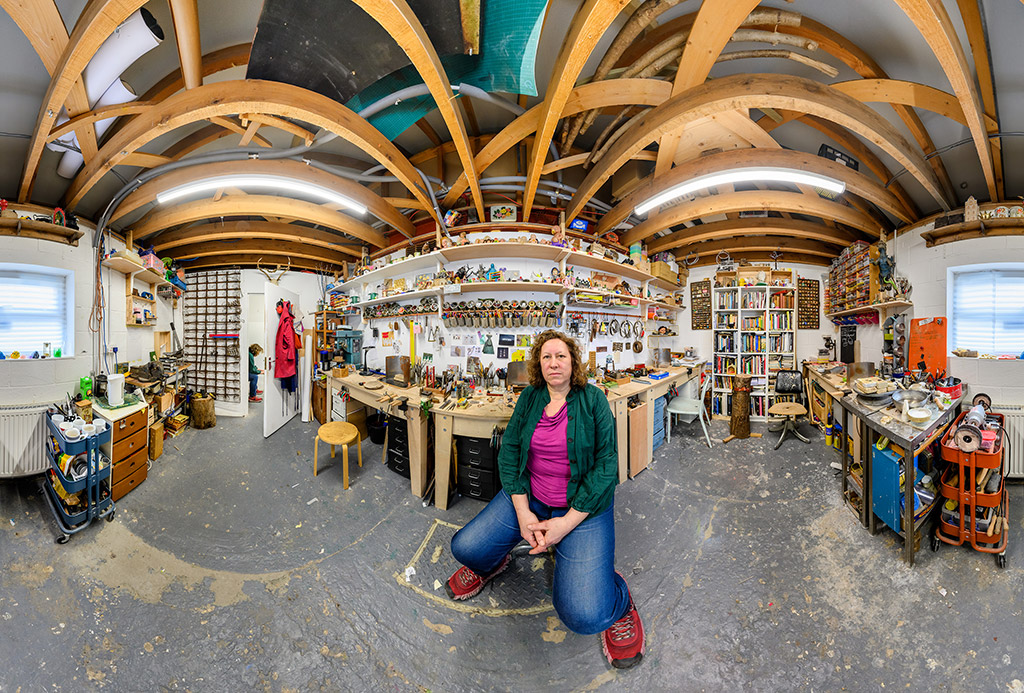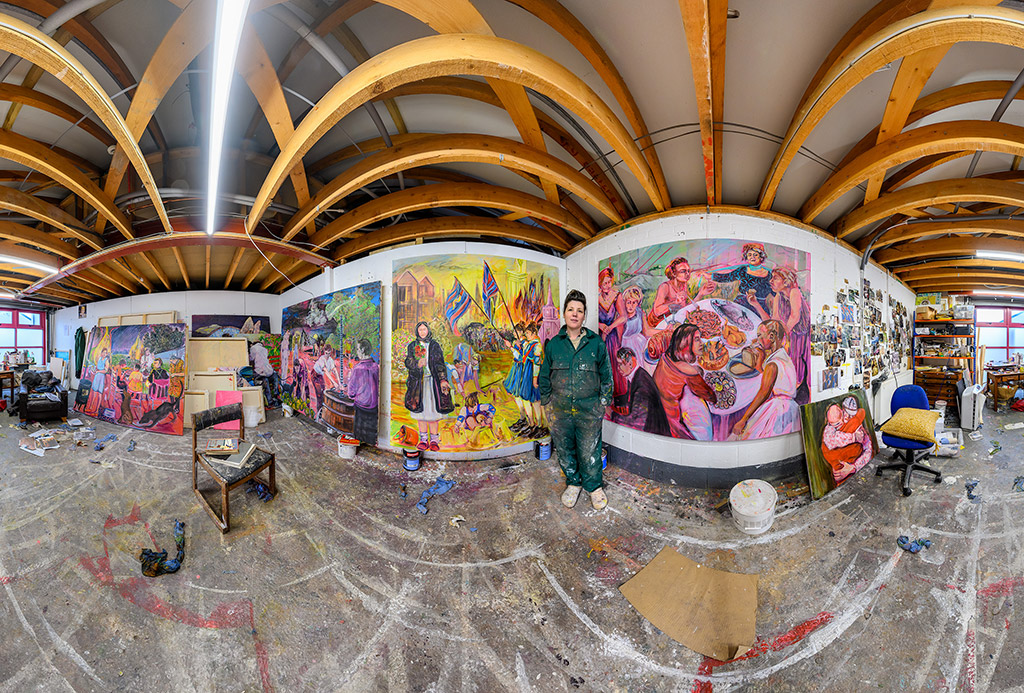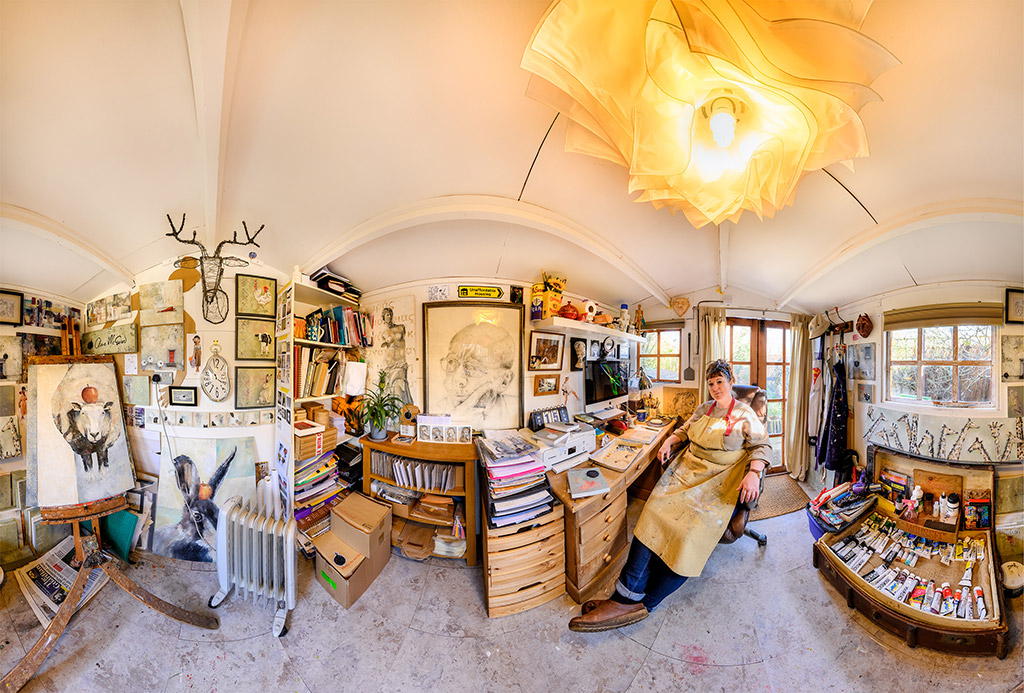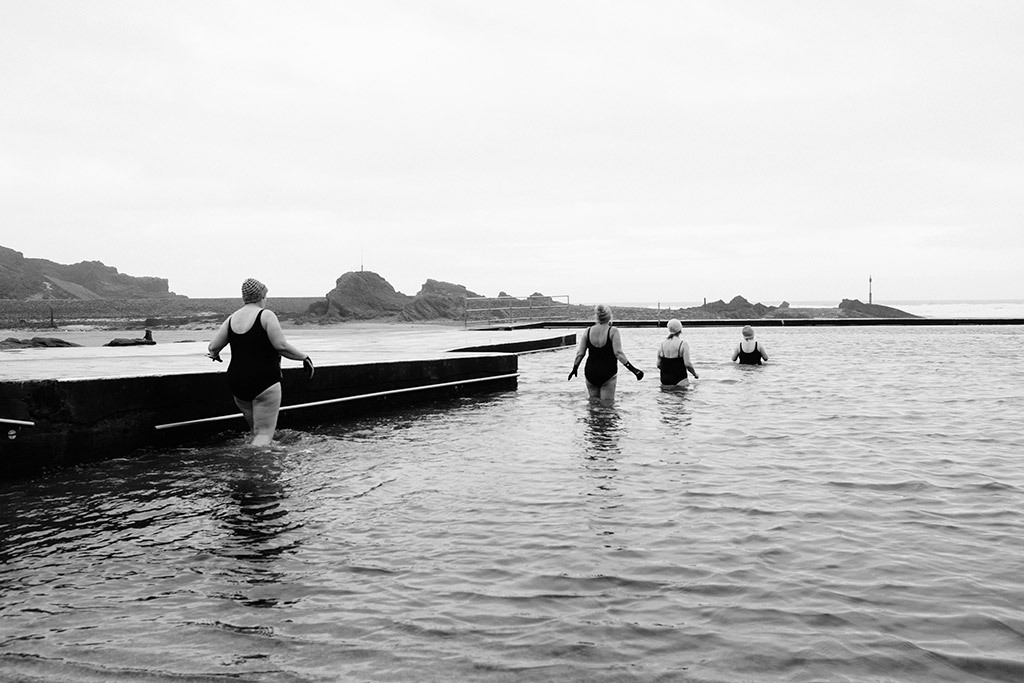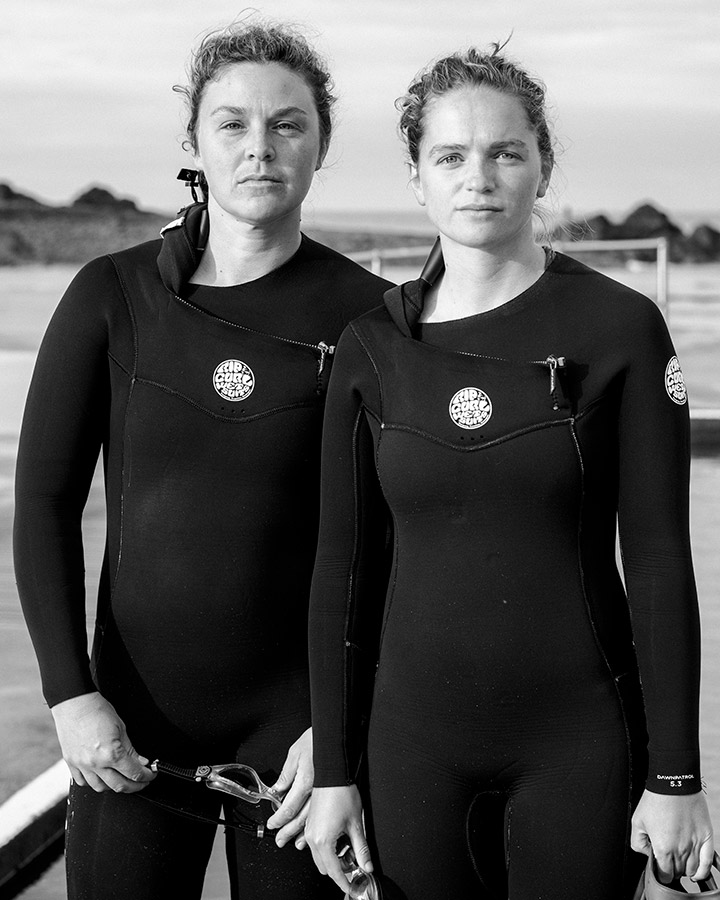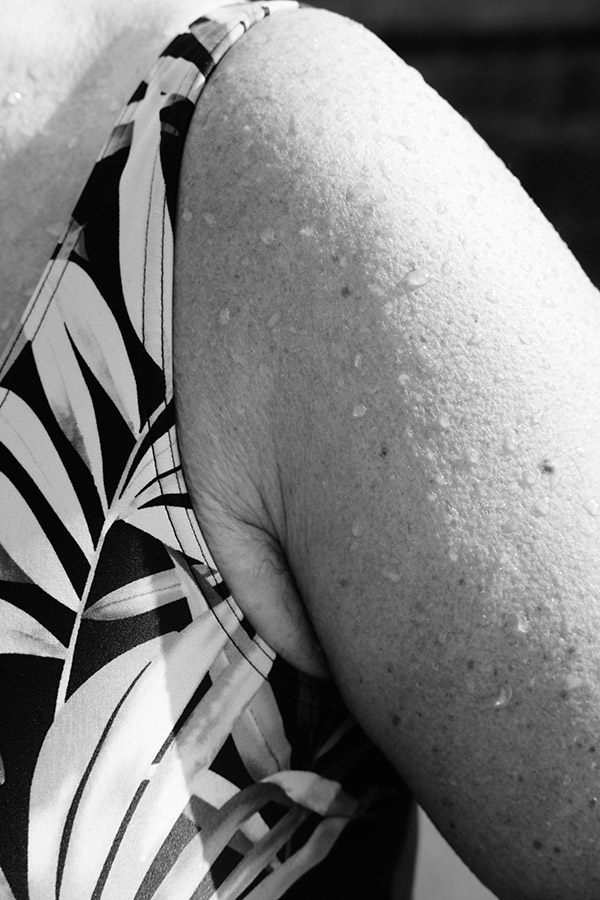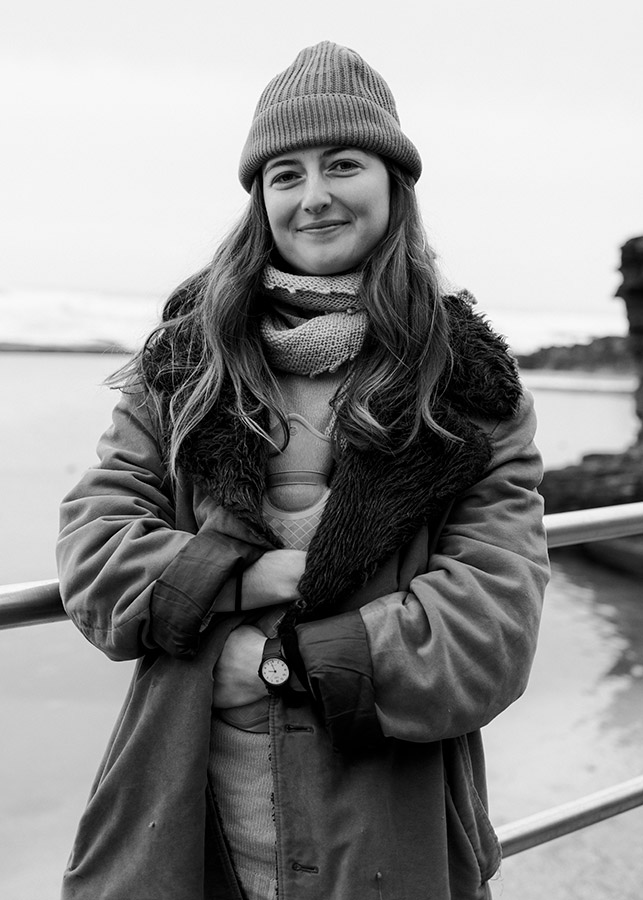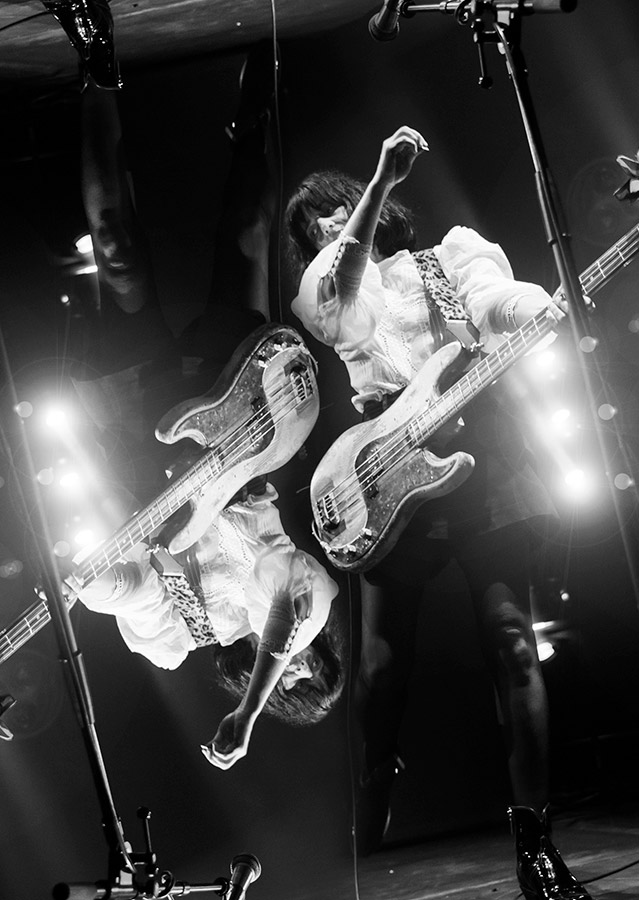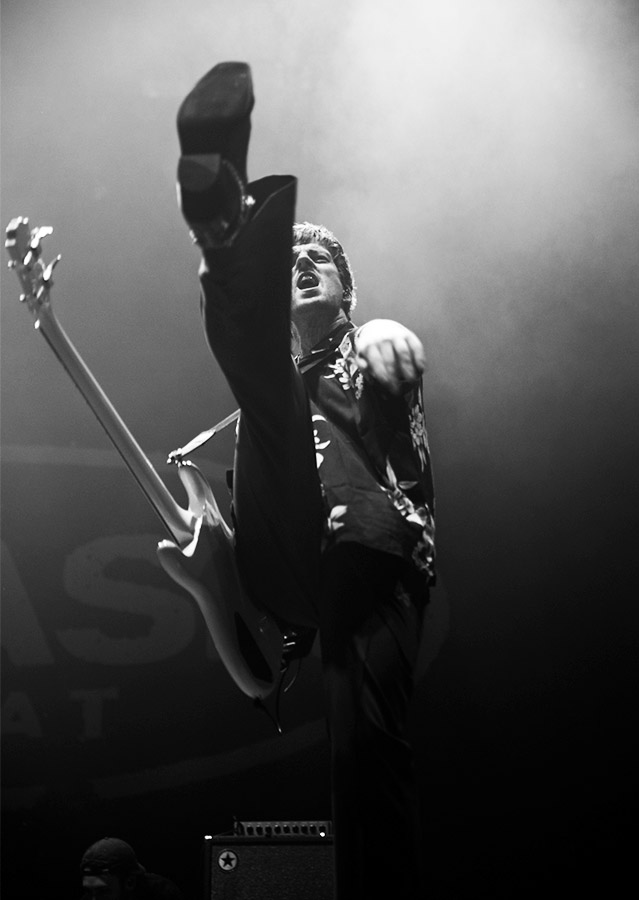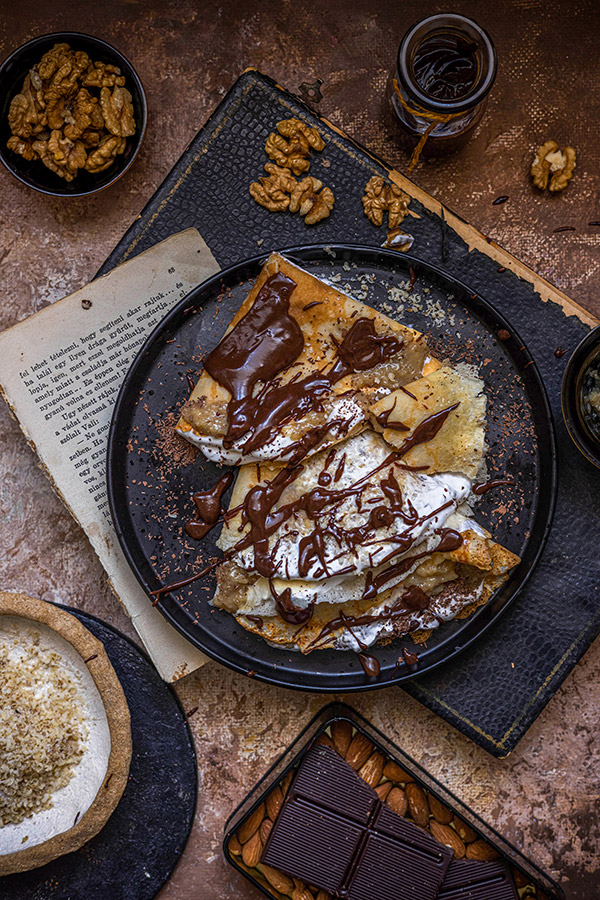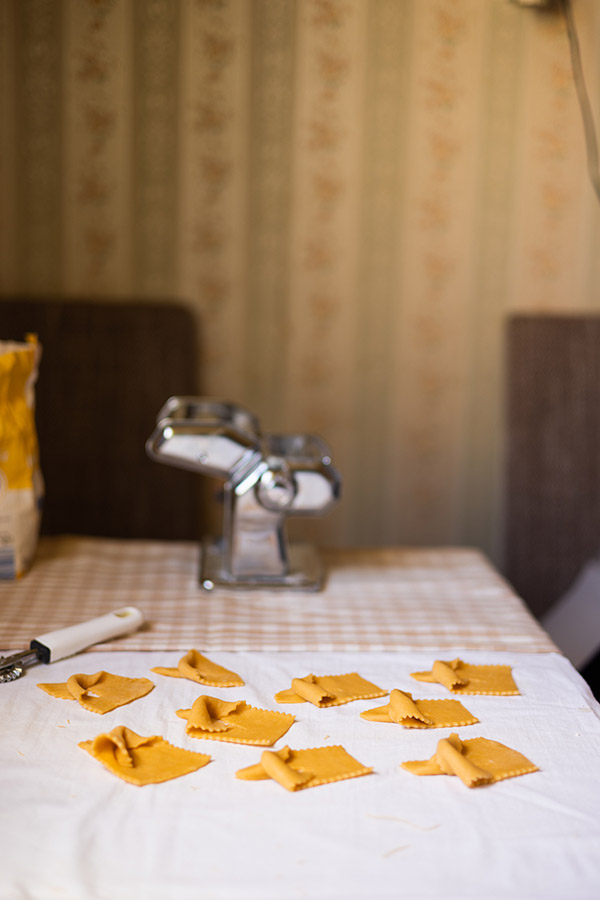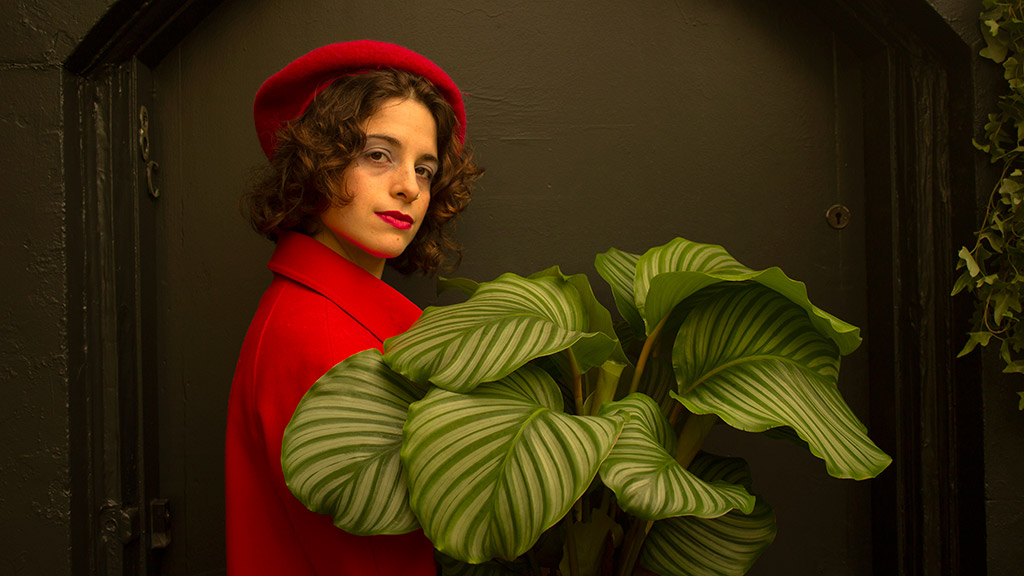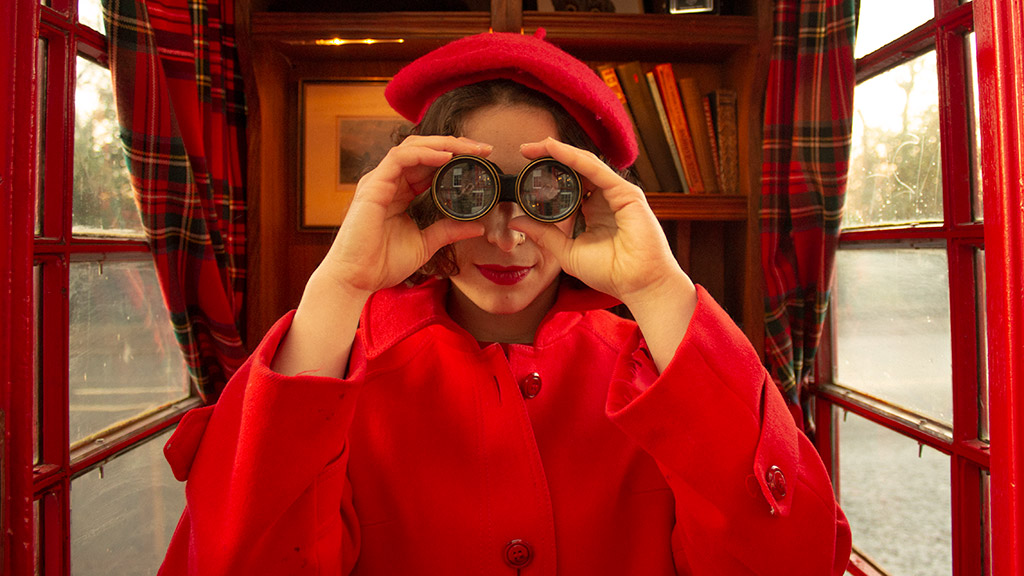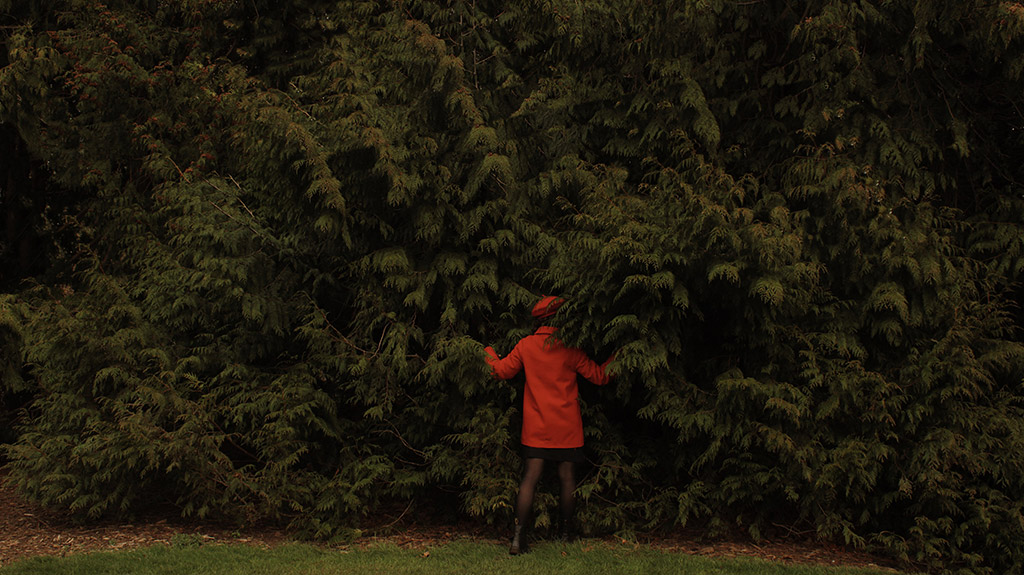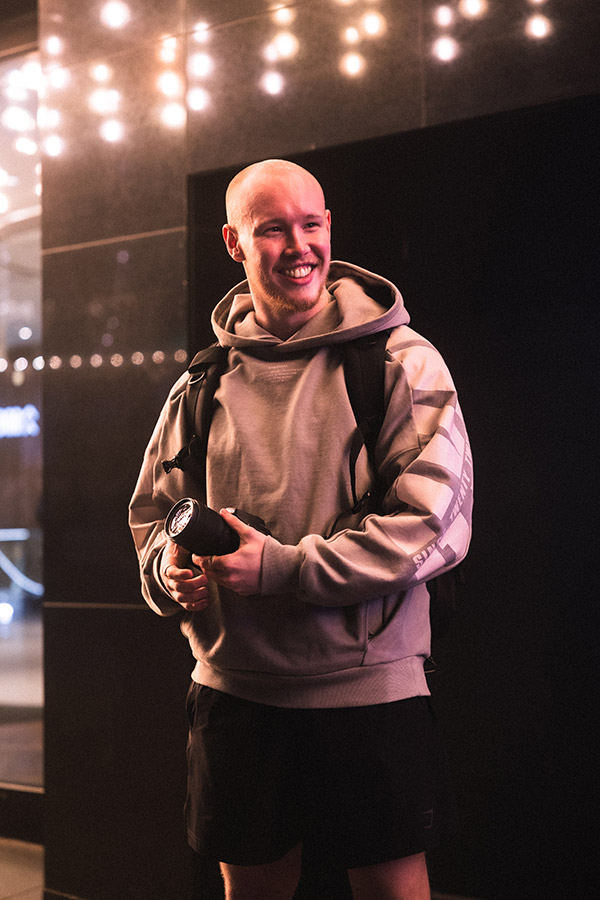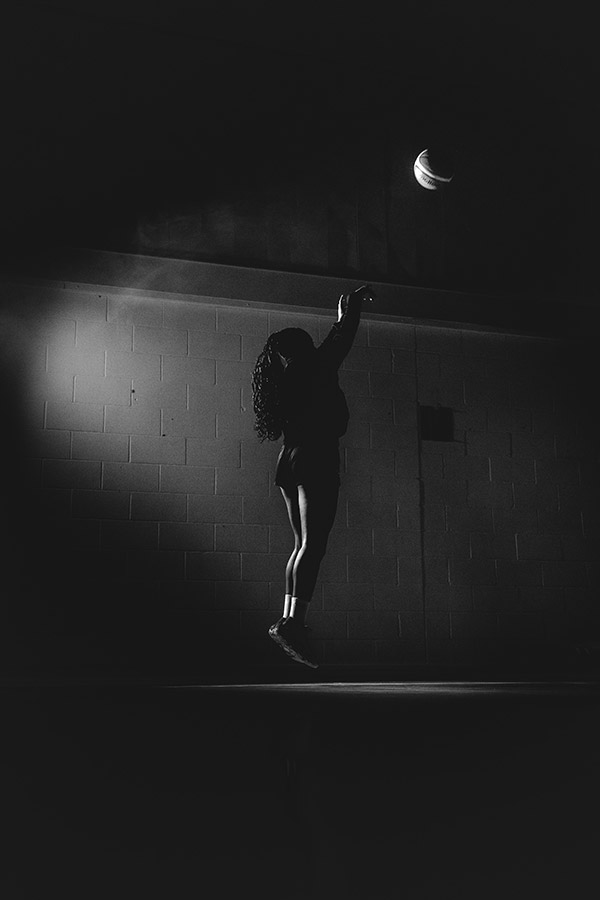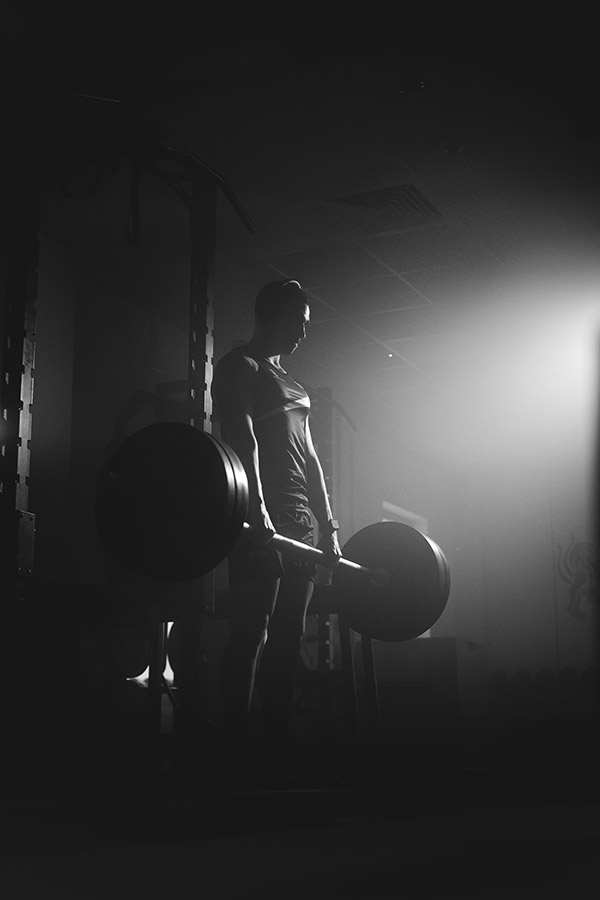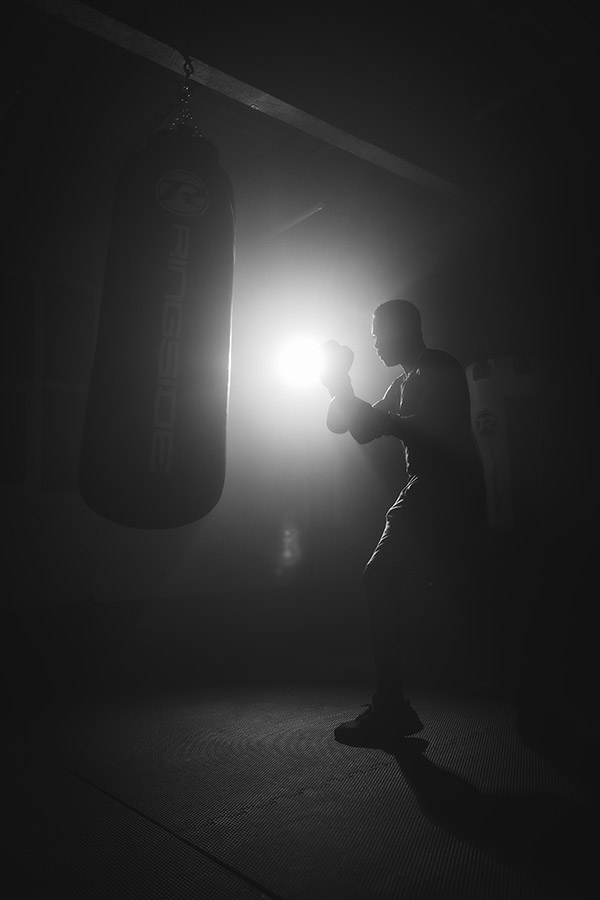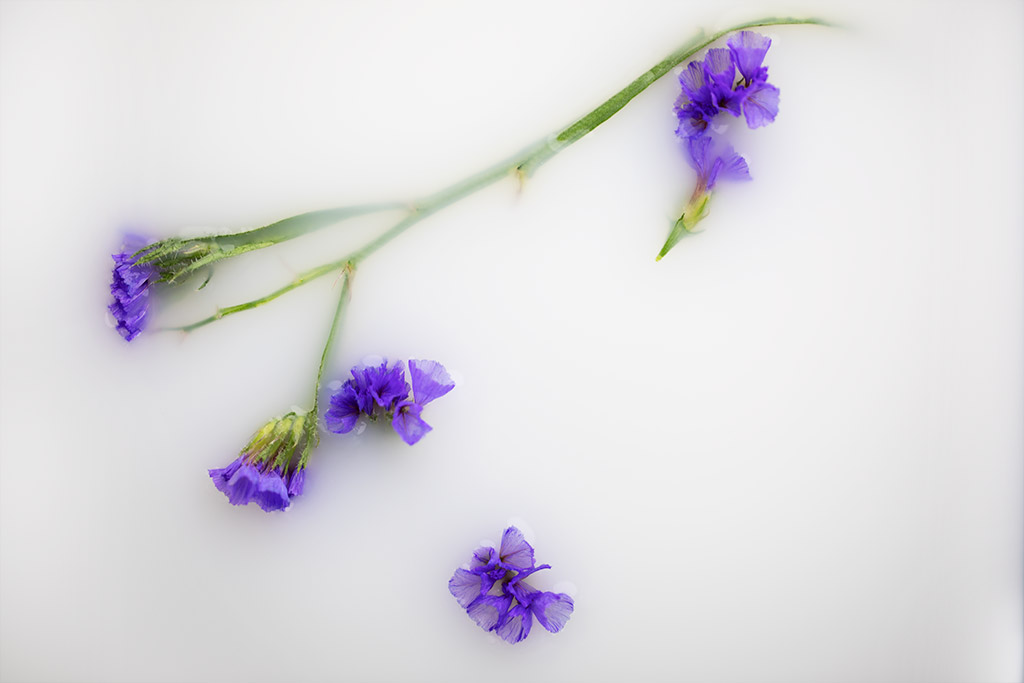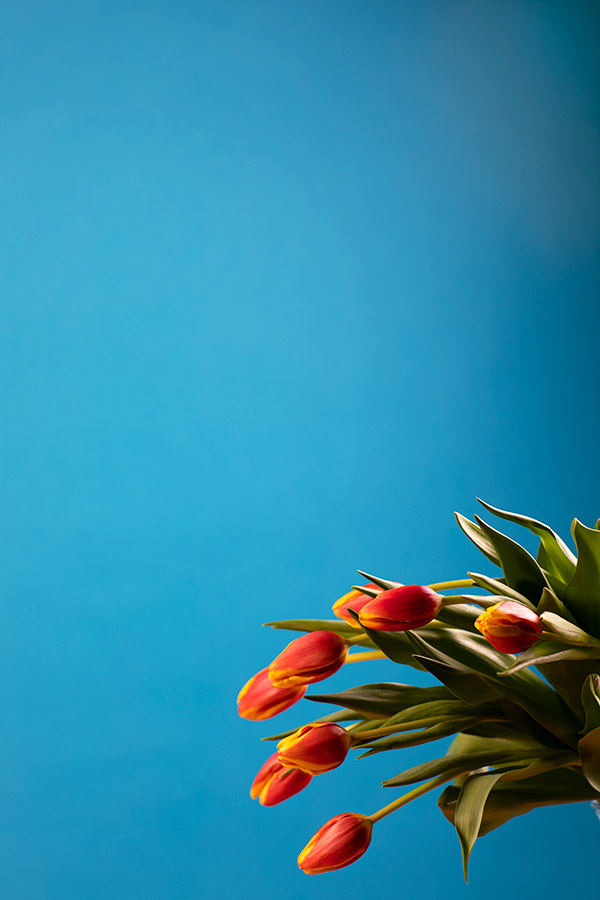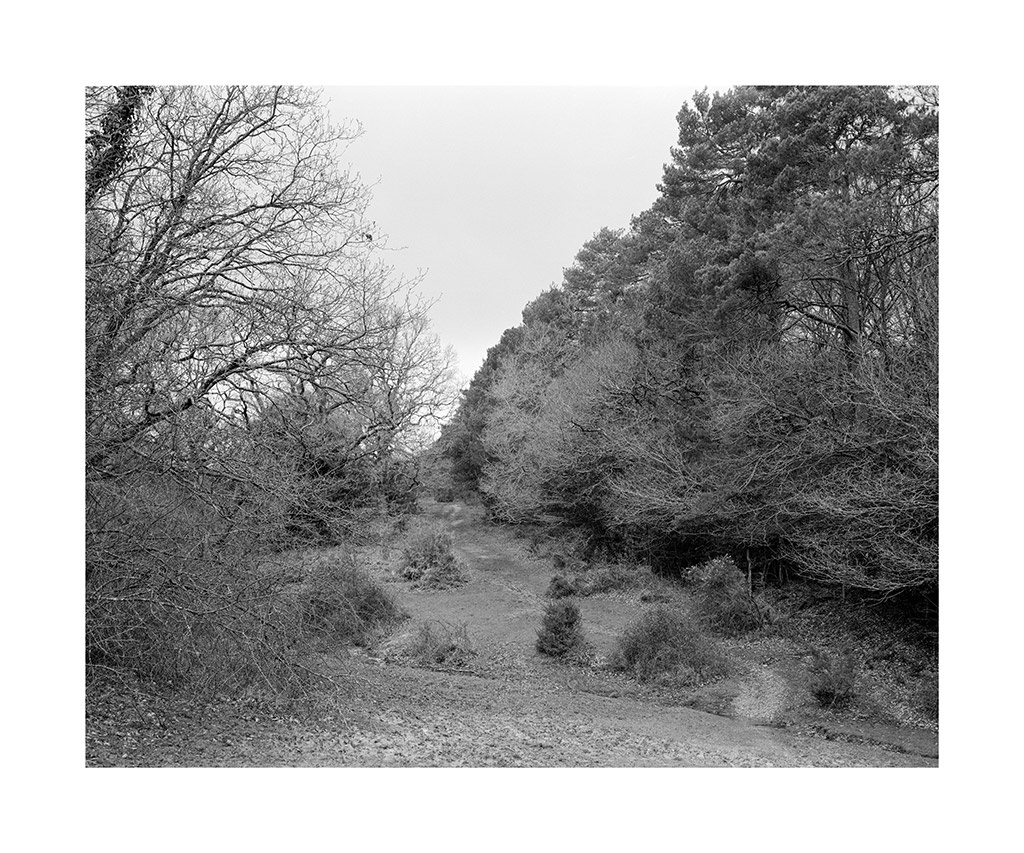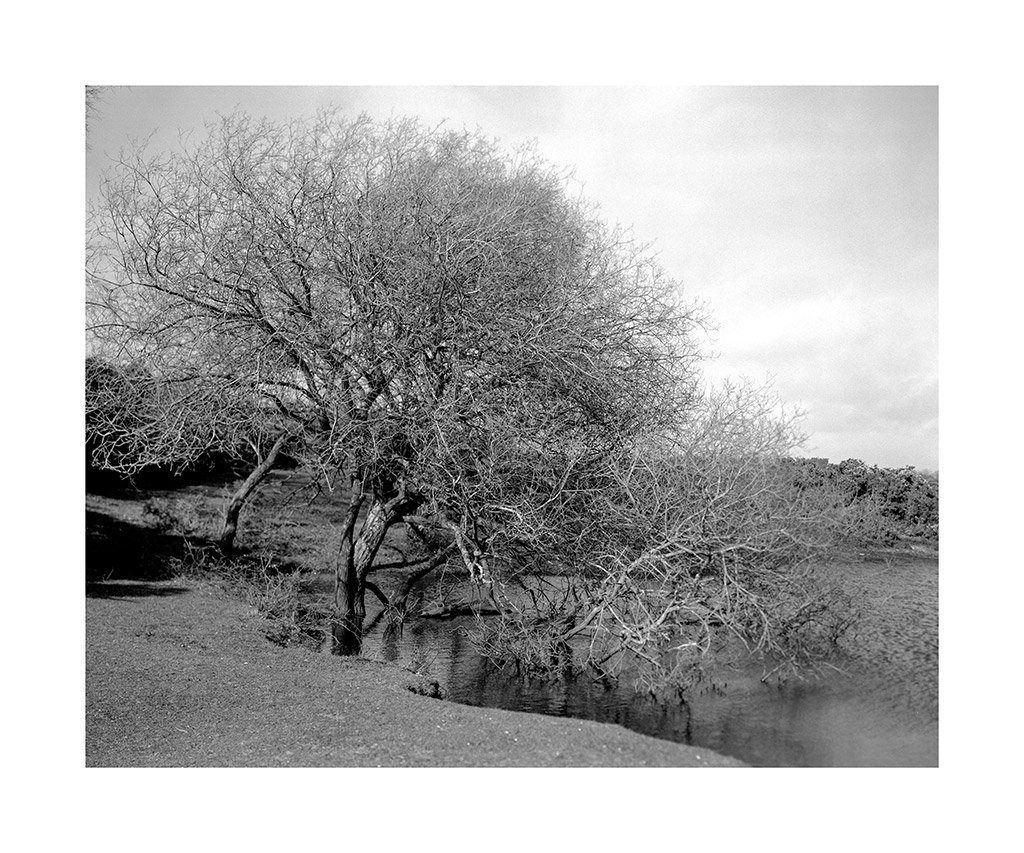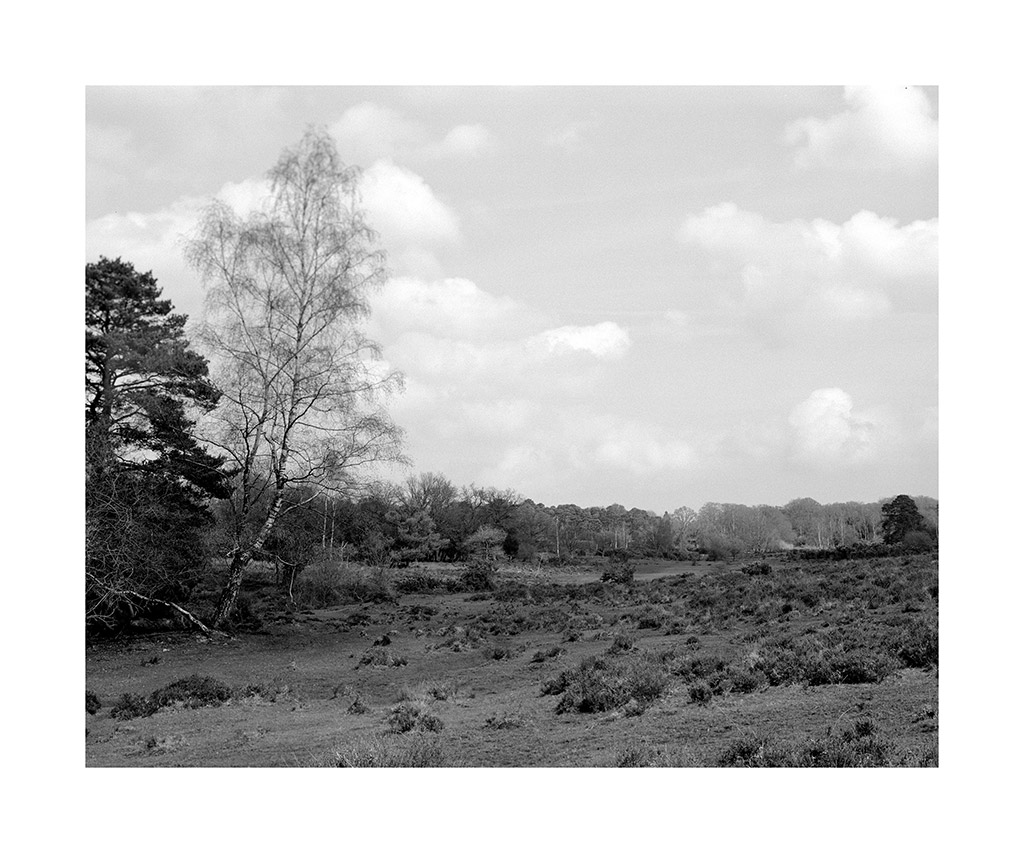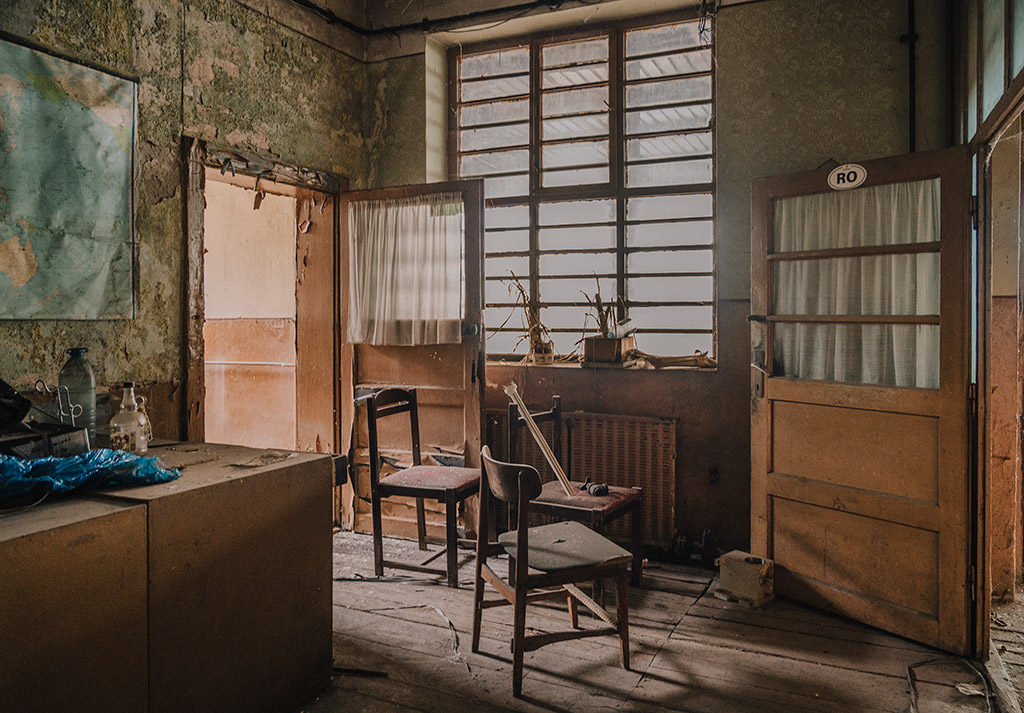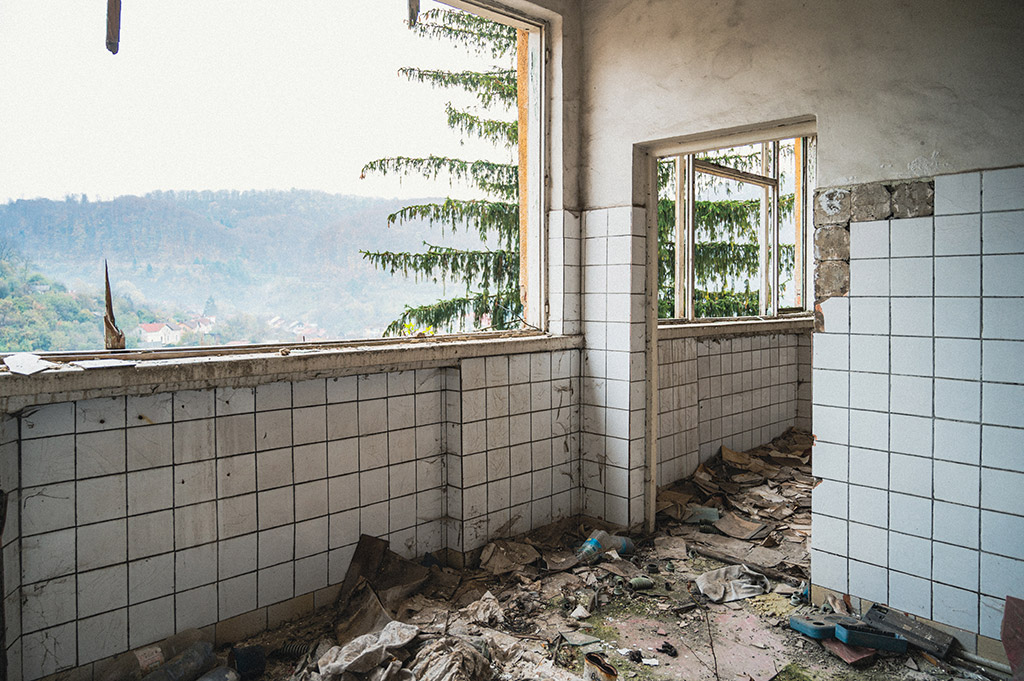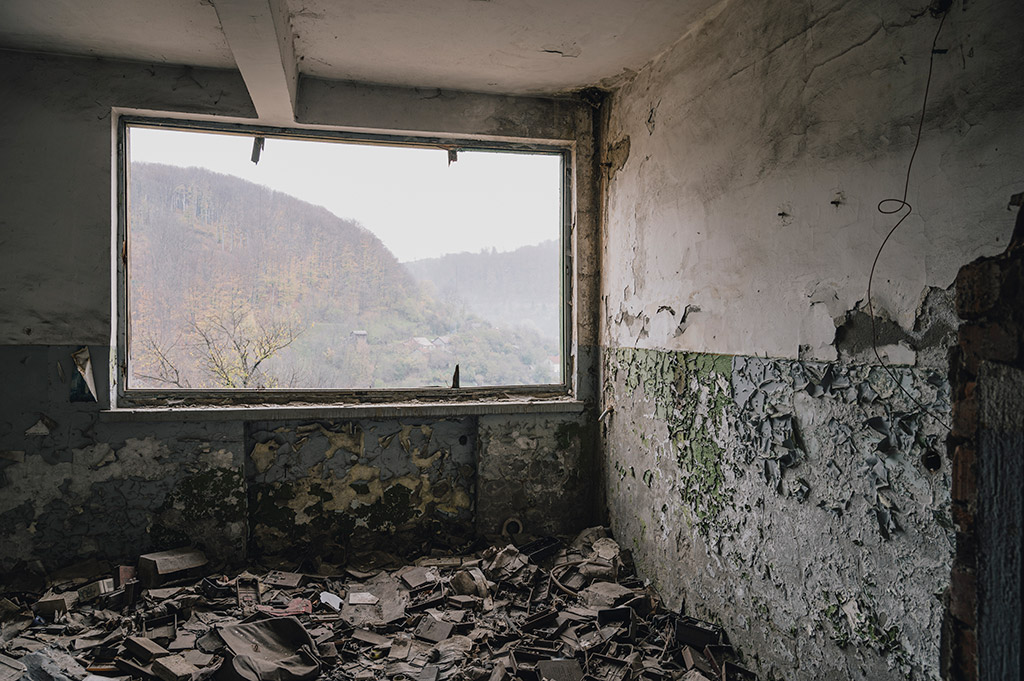Summer marks an important time for graduating creative students – the final degree show. With projects ranging from floral still life, commercial food photography, portraiture and landscapes and work inspired by Wes Anderson – there’s a feast for the eyes at these shows, with something for everyone. Below, we share our highlights from this year’s photography graduates from universities across the UK and the photographers tell us more about their projects. Plus, their future plans and advice for other photographers and prospective students.
Photography graduate show highlights 2023
Tanesha Lewis
BA (Hons) Photography, University of Westminster
Gear: Canon EOS 5D Mark III, using 50mm and 85mm lenses.
Instagram: @taneshaphoto
Can you tell us about yourself and how you got into photography?
I’m a UK-based photographer originally from the West Midlands, I’m about to graduate from The University of Westminster where I’ve been studying in the Photography BA course. Photography started as a hobby, a means to find some freedom outside my 9-5 job at the time. I captured mostly nature and street photography when I started, completely contrasting with what I photograph now. My work covers fashion photography, editorial and portrait photography focusing on the identity and visual expression of the subjects, and exploring one’s individuality through fashion, colour and self-narrative.
Can you tell us more about your project?
The Child Within Remembers is a self-portrait project consisting of 3 full-colour A1 images, the project aims to visually represent the personal growth I’ve achieved towards self-acceptance and self-love despite struggling with a negative self-image at a young age. Instead, I seek to celebrate my own diversity and unique self.
It’s a project born from the feelings of negativity when exploring the memories of my younger self as a mixed-race child who felt they never fit the beauty standard, the project is a love letter to her. It’s a representation of past criticisms turned beautiful, constructed through my lens to visually portray self-image in the bright and colourful way I see myself, my hair, my skin, and my identity utilising fashion elements and borrowing aesthetic stylising from the Renaissance and Baroque genres.
What are your future plans?
I’d like to combine my love to travel with photography by showcasing the diverse beauty and creativity of fashion, I hope to inspire myself and viewers to embrace their own unique styles, appreciate the beauty of different cultures, and challenge social expectations. I want to continue building a strong portfolio of work with a recognisable style. I plan to undertake a few personal projects exploring identity and fashion. Moving forward I’d like to be able to showcase my work through exhibitions and online platforms.
Do you have any advice or top tips for others wanting to get into photography? Or wanting to study photography?
- If you’re just starting out, you don’t need that expensive camera right away. When I began building my portfolio, I started with a Canon 1300D and a single 50mm lens, it wasn’t until 2021 I upgraded.
- Network and connect with other creatives! Don’t be afraid to reach out to creatives whose work you like, it’s okay to ask questions, to seek advice and feedback.
- Build your portfolio and give yourself time to develop your own style, the more you practice and experiment the easier it will be to discover your strengths.
Jessie Syta
BA (Hons) Marine and Natural History Photography, Falmouth University
Gear: Sony A7R V, Sigma 24-70mm F2.8 DG DN Art + Urth 82mm UV (Plus+) Lens Filter, Manfrotto 190Go! Carbon Fibre, JJC Cable Release
Instagram: @jessiesyta
Can you tell us about yourself and how you got into photography?
Hailing from Derbyshire, I spent my childhood growing up in the peaks. I have always had a great love for the outdoors and will spend as much time as possible out in nature, birdwatching, hiking or paddleboarding, I am usually outside somewhere. My love of landscapes first drew me to photography. I knew I wanted to create images of beautiful places, so my photography hobby blossomed.
I spent a few years as a Freelancer, mainly shooting weddings, events, and products, I wanted to do more though, so I set about applying for university. I started my degree at 26 in BA (Hons) Marine and Natural History Photography at Falmouth University, it was perfect for me to combine my two favourite things: photography and nature.
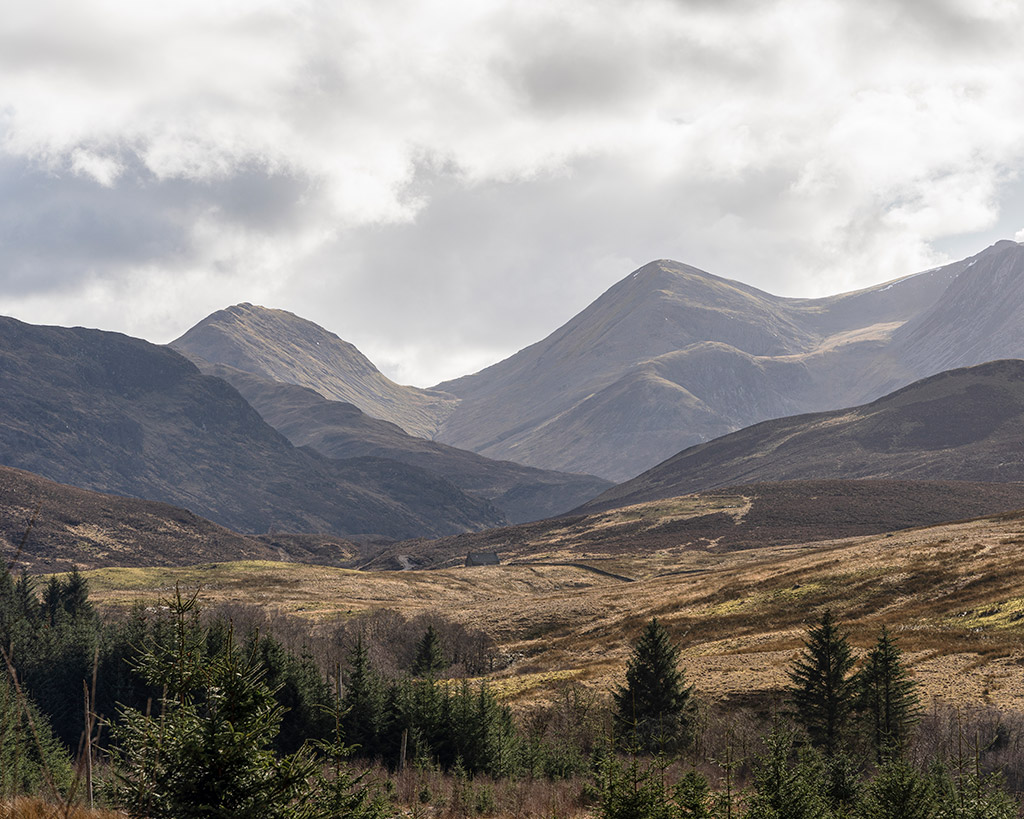
A Shelter in the Mountains. Bothies are located in remote landscapes, there for weary walkers to take shelter and rest before continuing their journey. Photo: Jessie Syta
Can you tell us more about your project?
In Wild and Lonely Places is a project exploring the magic of Scottish Bothies. Bothies are basic shelters hidden in remote locations across Scotland, their purpose is to act as shelter and refuge for weary travellers, their locations however are a secret, only passed by word of mouth between fellow walkers.
I was highly intrigued by the idea of these spartan little huts, and the community to be found surrounding them. I dedicated my final year and project to researching them and eventually heading out on my own bothy adventure.
It was not easy though, lots of equipment is needed just to embark on these journeys, even before you start adding weighty photography equipment, particularly when out during the bleak winter months! My bag minus camera equipment and tripod, was weighing in at roughly 30kgs. It has been a physically demanding project, but the rewards far outweighed the hardships faced (peat bogs, Scotland’s famous rain, bitter winds, storms and more than one boot full of cold mountain water!).
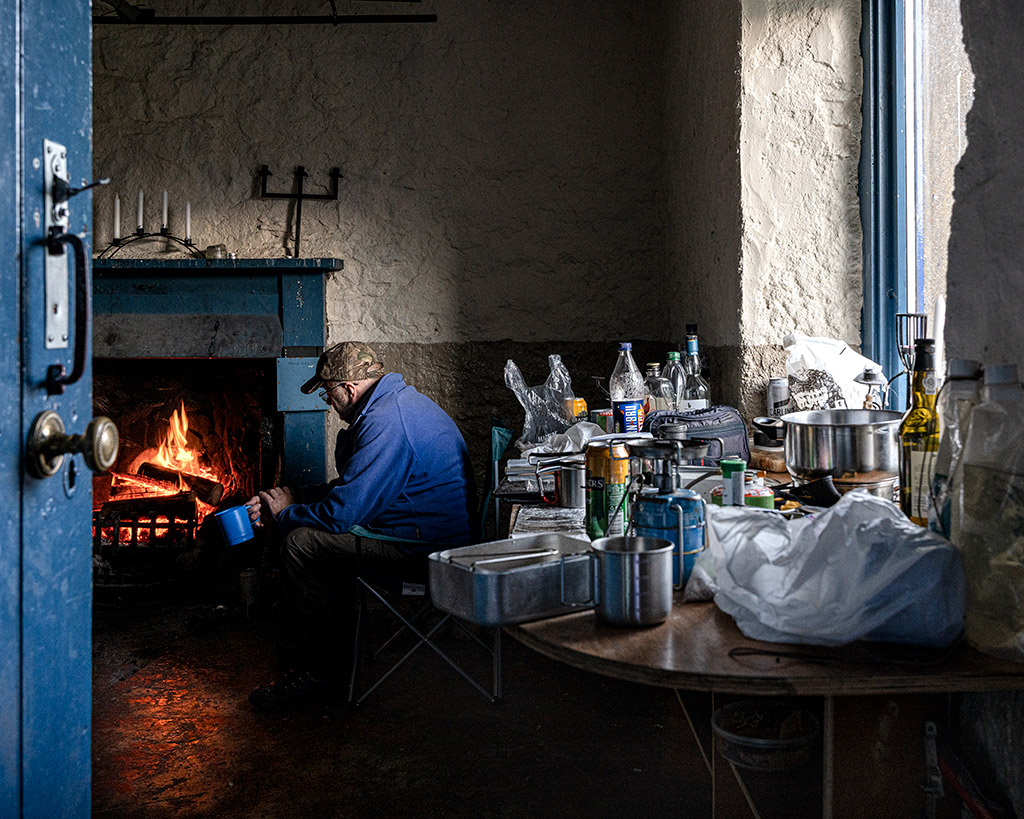
Meeting new friends. When arriving at a bothy you never know who, you will meet. There is a wonderful community within bothying, sharing food, stories, and a dram of Whisky if you’re lucky. Photo: Jessie Syta
My aim with each Bothy was to capture the traits that make each one so unique. I wanted to capture imaginations and hearts and rekindle the mystery of these shelters. Each image was taken with great care, and with only the one camera and lens setup; all images are naturally lit and have had only minor touch ups in post-production. As the bothies are secret, I have made a concerted effort to keep them that way.
What are your future plans?
I plan to continue working on my project In Wild and Lonely Places, and build a much more rounded, and comprehensive piece of work, one day turning it into a photobook series. Alongside this I am applying for a Master of Science at the University of Nottingham studying Biological Photography and Imaging and hoping to use this opportunity to continue research that I started during my undergraduate degree. But before all of that, I am going to have a well-earned holiday!

Give and Take. It is the custom when bothying to take something with you to leave behind for the next bothy goers, it could be candles, tinned food, and sometimes even a beer or two. A nicety that has been going on for decades. Photo: Jessie Syta
Do you have any advice or top tips for others wanting to get into photography? Or wanting to study photography?
- Having the most expensive, or the fanciest camera out there, doesn’t necessarily make you the best photographer. Too much emphasis and pressure are put on these things, but in truth, it is all about what you can produce with whatever equipment you have, even if all you have is a smartphone! There is plenty of time to upgrade equipment in the future, in the meantime, take the opportunity to practise and improve your skills.
- Do research and then do more research. Knowing about the field makes you a more knowledgeable, capable photographer. Research is a very valuable, and underused tool.
- Mostly, don’t compare yourself to others, as someone told me, “Comparison is the thief of joy”.

Looking Out. Bothying can offer some of the most phenomenal views you will ever get to witness. All hidden unless you set out on your own adventure. Photo: Jessie Syta
Anuschka Toogood
BA (Hons) Photography, Norwich University of the Arts
Gear: Canon EOS 90D, with an 18-55mm lens
Instagram: @anuschkatoogood_photo
Can you tell us about yourself and how you got into photography?
I’m a recent graduate from Norwich University of the Arts. My practice focuses on architectural photography, being drawn to both interior and exterior forms of modern architecture. With a particular interest in brutalism. Through photography I found I was able to turn my interests into an art form and it led me to discover my passion for architecture.
Can you tell us more about your project?
My recent and final project at university focuses on the details in architecture that can often be overlooked. I wanted to highlight these details to show my appreciation of the architectural design and back story. Such as my interest in brutalism’s desire to achieve an urban utopia through aesthetic and practicality. When I am on location I start by shooting what I am naturally drawn to, visually focusing on lines and curves creating abstract geometric shapes, through my composition and framing. This combined with ambient light and contrast, enhances the architectural design features I am trying to showcase.
What are your future plans?
Now finishing university I am trying to start my career within architectural photography. Through assisting to gain invaluable opportunities to learn from other professionals to get commissions of my own. I hope this will enable me to work while traveling to explore a wider range of architecture across the world.
Do you have any advice or top tips for others wanting to get into photography? Or wanting to study photography?
- My advice for people starting photography would be to take your own personal interest, immerse yourself in them and use that as inspiration within your photography. Having this personal connection to your work is what makes it unique so try not to compare your work to others.
Mark Morgan
BA (Hons) Photography, Anglia Ruskin University
Gear: Nikon Z6 with a Nikon Z 14-30mm f/4 zoom lens, and a Rollei panoramic tripod head.
Instagram: @markmfoto
Can you tell us about yourself and how you got into photography?
After many years working in IT, I went to university as a mature student originally to study marine biology, but switched to photography after a year when I realised that’s what I should have been doing all along. I first became interested in photography at around 10 years old when I picked up a copy of Amateur Photographer someone had left on a train and I was immediately hooked (true story!). Within a few months I was developing black and white film in the kitchen at home, and making prints on an old Zenith enlarger duct-taped to the downstairs toilet, with cushions wedged into the window to block out the light.
Can you tell us more about your project?
The idea behind the project was to photograph creative people in their studios and workshops, showing the spaces that they had created around themselves in order to do their work. Instead of picking out the bits that I found interesting, and perhaps missing something important to the artist, I chose to photograph the full 360 degree view of each workspace, leaving nothing out.
I’ve always liked distortion in photographs, and I drew a lot of visual inspiration from fisheye images on album covers such as Karl Ferris’ iconic image on the US release of the Jimi Hendrix ‘Are you experienced’ album, right through to the fashion work of photographers such as Tim Walker. I tried to merge this with inspiration from the very structured architectural work of photographers such as Candida Höfer, and produce something with my own twist on it.
To create each image I used a panoramic tripod head that rotates around the nodal point of the lens instead of the base of the camera, and shot a series of overlapping frames covering the full 360×180 field of view. These were stitched together in PTGui Pro, and the final post production was done in Photoshop, which took anything from a couple of hours to a couple of days per image.
I didn’t know any of my subjects before I photographed them. I began by searching on the internet for local artists and emailing them to ask if I could photograph them. After a slow start, people began to contact me because they’d seen work I’d made of their friends, and in the end I was turning people away because I had more work than I could complete in the time available.
What are your future plans?
I very much plan to continue with my photography, and expand the project to include other types of people in interesting workspaces — perhaps musicians, tattoo artists, small shopkeepers, etc. It would be great to exhibit more, and I’d love to work on a book project.
Do you have any advice or top tips for others wanting to get into photography? Or wanting to study photography?
- Resist the temptation to spend too much time watching other people taking photographs on the internet — go and shoot, make mistakes, and create stuff!
- As for formally studying photography, I think the real value is being involved with people you may otherwise never have met, and being exposed to ideas you may never have thought of. If you possibly can, I think it’s a very worthwhile experience.
Emily Barlow
BH (Hons) Commercial Photography, Falmouth University
Gear: Fujifilm X-T3, 50mm and 35mm prime lenses.
Instagram: @emily.barlow.photographer
Can you tell us about yourself and how you got into photography?
I have always dabbled in photography, but had something of a life change in 2018 when I moved to Cornwall to shake things up a bit. When I got here I became self-employed as a social media manager creating content for my clients and thinking, ‘well I actually really enjoy the photography part… why not do something more serious with it’? I ended up studying for an NCFE at the Newquay Adult Education Centre and was then accepted in Falmouth University for the BA (Hons) in Commercial Photography which was a new degree, for which we were the very first cohort to enrol.
Can you tell us more about your project?
Before I moved to Cornwall I found it hard to make friends as an adult and struggled to find communities that meant something to me, but once I arrived in Bude there were just so many new friends to be made and everyone was so welcoming. Eventually I found my way into the swimming community at Bude Sea Pool and I love to swim in the summer and early autumn, but winter swimming is not for me! In my first term at university though I worked on a small six week documentary project about the sea pool and the winter swimmers, and it has just carried on ever since.
I read somewhere that Todd Hido found the meaning in his work about Homes at Night after he made it, and that has sort of been happening for me with my documentary work lately. I have found that I am drawn to places where there are people forming groups and enjoying time together as a community (I think that is something to do with how I am changing in response to the ever increasing presence of technology in life, as I find myself backing away from screen time and gadgetry).
It seems to me that as humans we need real connection with each other, not just online connection, but in person connection, a place to be with others and that this is massively important to our wellbeing and we need to do more of it. If my photography can share the stories of the people out there doing that it might encourage others to join in too and improve the lives and health of others. Not only does the pool, provide a place for friendship and community, it also provides a place to connect with nature and self, free of charge. It is a place to recalibrate the mind away from screens and that is another important aspect of the project to me.
I shoot digitally, though the very first pictures I shot were on film… I just found with the university deadlines etc that digital worked better for me, plus film is so so expensive now.
What are your future plans?
To carry on shooting, get my photography business up and running, set up a creative networking/support group for my area and to just keep developing my skills. A little bit of travel would be fantastic and ideally get commission around the UK for some editorial. It would be great to get to work with charities on some documentary work too.
Do you have any advice or top tips for others wanting to get into photography? Or wanting to study photography?
- It’s not about gear, it’s about finding the subject you feel most passionately about. Making work that you care about will push you to want to do it justice and produce your best photography.
- University helped me find what it is that I am interested in and opened up my mind to the possibilities for life as a working photographer, which has given me and understanding of what direction to head. It’s not for everyone though, especially given the expense of it. I would do it all over again though, if I had the choice again.
Charlotte Parkinson
BA (Hons) Photography, Norwich University of the Arts
Gear: Canon EOS 6D Mark II, Tamron 24-70 f2.8, Canon 50mm STM 1.8
Can you tell us about yourself and how you got into photography?
When my Grandma got married in 2015, I took my Nikon Coolpix camera and ended up taking some photos of my cousin, Jessica, in her bridesmaid dress. I started directing her to pose and smell her bouquet of flowers for the photo’s and that’s when I realised that I would really like to do photography. I went to Milton Keynes College to do a Higher National Diploma course in Photography after my A-Level’s and as a result joined NUA in the second year of study. I have since experimented with many genres of photography; weddings, editorial, landscape and street photography.
In 2022, I took my camera with me to my partners’ gig in Brighton, a band called Sainted, to try my hand at music photography and I have never looked back. I have since joined two music publications and have photographed names such as Biffy Clyro, Architects, Pixies and I Prevail.
Can you tell us more about your project?
The pieces that I chose to exhibit were four of my black and white images. I wanted to show images that exuberate action, emotion and the atmosphere of live music. I think that the power of live music is underestimated sometimes, and the way it brings complete strangers together, who leave as friends in this big community is beautiful.
My image of Paz Lenchantin of Pixies was edited on the train back to Norwich from London, as I was so excited to get straight into editing these images. The ‘playing card’ effect I’ve used in this image was largely inspired by Isha Shah and her dynamic editing of music photography, making it so unique and powerful. I definitely want to take this style of editing further, harnessing my skills and eventually having my own distinctive style that is recognisable.
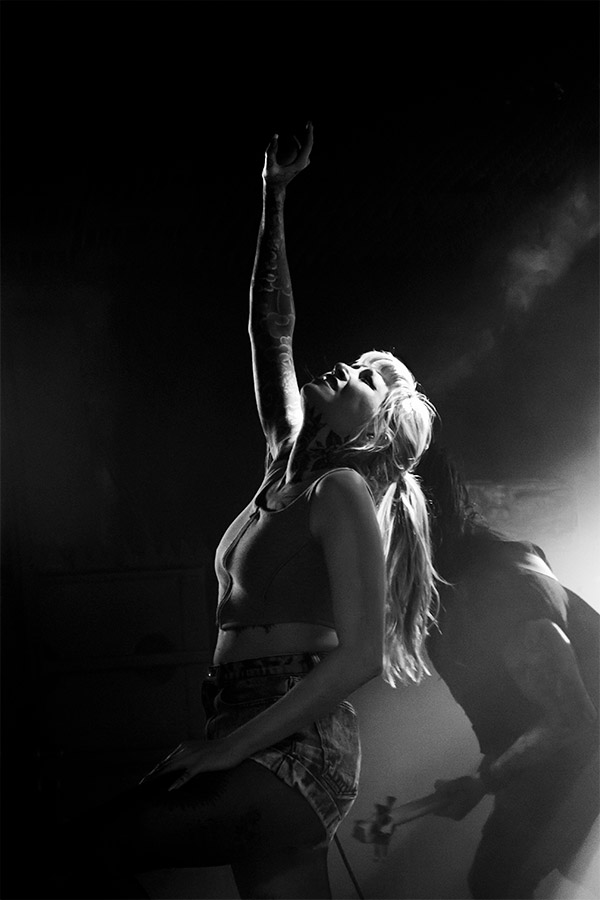
Alice Guala of Lake Malice. Photo: Charlotte Parkinson
What are your future plans?
I’m graduating from university this month, so I’ll be continuing my work as a freelance music photographer and having this extra time away from studying will allow me to take on more commissions which I’m looking forward to. I’m going to spend the summer experimenting with videography for some shows at my workplace, MK11 Live Music Venue, in order to be able to offer that as a service in the future. I’d love to be able to go on tour with a band/artist in the near future, should any musicians reading require a photographer!
Do you have any advice or top tips for others wanting to get into photography? Or wanting to study photography?
- Not everybody will like your work or believe in you as a practitioner, but that’s okay! Don’t let it get you down and channel it into motivation and prove them wrong.
- Also, university isn’t the be-all and end-all – whilst I had a good university experience, I know others who either didn’t get a degree or had a shocking experience, who are now some of the most successful people I know.
- Believe in yourself and celebrate the small wins!

Joel Hokka of Blind Channel. Photo: Charlotte Parkinson
Kira Szolga
BA Commercial Photography, Falmouth University
Gear: Nikon D610, 50 mm, and 70-300 mm lenses
Instagram: @ksz_photos
Can you tell us about yourself and how you got into photography?
I have been studying photography for 4-5 years. I studied HND, and HNC in college. I am Hungarian and Canadian and 22 years old. I got into Food photography only last year, I was ambitious to explore out of my comfort zone.
Can you tell us more about your project?
As a young girl, I watched my mother baking pastries, strudels and cakes in the kitchen. I found it mesmerising that different ingredients with different textures became a mass in a bowl and then turned into something new, delicious, and aesthetically pleasing in the oven. This sincere interest guided me when I took these pictures. I researched and was inspired by food photographers like Donna Hay, Dennis Prescott, Skyler Burt and Diana Belenko regarding colour palette, composition and lighting. I prefer minimalist food photography focusing on the food itself and not relying on props to tell a story. My aim was to showcase the most attractive features of the dish and create beautiful and appetising images.
For this project, I photographed without using a tripod. I prefer working with my free hand to experiment with different angles.
I worked with minimalistic food styling, using everyday kitchen objects to create a welcoming, homely, and rustic feel. I don’t like fake or misleading food photography, so I stayed as real and authentic as possible. Before styling the cakes and arranging the compositions, I considered the food’s most exciting features, such as the colour, shape, texture or the presentation itself. Then arranged the background, props and light to serve that feature best.
What are your future plans?
I am graduating this month, and on a hunt for some opportunities and work, but I am struggling with finding work. I live in Milton Keynes and would travel if needed. I really like food photography and also leaning into dog photography. I would also love to travel for work.
Do you have any advice or top tips for others wanting to get into photography? Or wanting to study photography?
- The only advice I have is to explore and to start something you really like, be creative, think outside the box, and don’t be afraid, nothing is wrong, every photo is memorable in someone’s eyes.
Holly Bloomfield
BA (Hons) Photography, Edinburgh Napier University
Gear: Canon EOS 1200D
bloomfieldphoto.squarespace.com
Instagram: @bloomfieldphoto
Can you tell us about yourself and how you got into photography?
I’m a 24 year old Swedish photographer based in Edinburgh, with a passion for portrait photography as well as cinematography. I’ve always loved art, film, photography and anything creative after growing up in a very artistic family. After being forced to go to art galleries as a child, I’m very appreciative of the many opportunities I’ve had throughout my life to pursue a creative career.
When I went to Brittany in 2017, I photographed everything and everyone I could see during my three weeks there. I had always loved photography and I had always carried my camera around, forcing my friends to let me shoot them since I was very young, but France made me realise photography is what I want to do as a career. I realised how happy and calm it made me feel, and after that I was set on studying photography at university to learn as much as I could about it.
Can you tell us more about your project?
My featured work The Bewildered Botanist follows a young woman in search of a life purpose through using a lost plant to symbolise the journey. The ending shows us an additional two characters who are on a similar path, but shows that the outcome is different for us all. I created this to show we can seek comfort in knowing that many of us struggle through life to find what is our purpose, but there is no right or wrong for anyone. It looks different to us all. I’ve always been very interested in film and the technical and creative aspects regarding cinematography, and that is why I chose to pursue for my final body of work for university.
Wes Anderson’s films have always been a huge inspiration to me, in the way he works with composition, colours and deeper themes masked by a whimsical exterior. Anderson’s work alongside the film “Amelie” by Jean-Pierre Jeunet have been main inspirations for this body of work.
Through looking at their techniques as well as narratives I have combined this with my own style of portraiture and way of composing photographs to create a world for The Bewildered Botanist. The work has a strong focus on the vibrant colours of the nature that surrounds me here in Edinburgh, with a prominent feature of reds and greens to contrast each other. I’ve been working on this project for the past 9 months and it has allowed me to create something that is fully mine and expanded my creativity.
What are your future plans?
I would love to work on a film set one day and I am currently looking into internships to gain experience and a better understanding of what goes into creating films. As I have a huge passion for fashion photography as well as cinematography, internships within the fashion industry are also something I am very interested in. I’m looking into moving countries in the next few years, hoping to gain experience all across Europe.
Do you have any advice or top tips for others wanting to get into photography? Or wanting to study photography?
- Just go out with your camera and shoot anything, if you don’t know what type of photography you are interested in, just try everything. The more you shoot, the more creative you will become over time.
- The most important thing is that you find it fun. It can be difficult getting into a creative career and it can be a struggle when you feel like you’re losing your spark for photography, but push through it and keep photographing! I get a lot of inspiration for shoots from either films or Pinterest so if you are ever in a creative rut, try to figure out the ways that help you get out of it.
I put all my work out on my Instagram @bloomfieldphoto so go give it a follow if you like it! Photography is such an important part of my life and I would love to collaborate with more likeminded creatives.
Lucas Dove
Photography and Video, DeMontfort University
Gear: Sony FX6 and a Sigma 35mm f1.4 along with a Canon EOS R6 accompanied by an RF 24-70 f2.8
Instagram: @lucasdove_photography
Website: www.lucasdove.com
YouTube: Lucas Dove
LinkedIN: Lucas Dove
Can you tell us about yourself and how you got into photography?
I am a 22-year-old sports and portrait photographer/ videographer. I first got into photography as a child, my earliest memory is going to Uganda and taking pictures of all the incredible animals and falling in love with the whole process. It then stemmed from here and led to me studying it in school.
Can you tell us more about your project?
In this last year of university, we were given the opportunity to showcase our creativity by taking on a project of our choosing. The project was designed to give us the freedom to craft whatever we wanted and in our own ways.
I realised that this was an excellent chance to showcase the skills I learned during my placement as a photography intern at Gymshark. The project aimed to blend photography and video to produce a cinematic piece that highlights the hard work required to attain success and the importance of sports in people’s lives.
On this project, I worked with my University’s Sports department and collaborated with creating my vision and bringing The Spotlight to life. Once I had the concept in mind, I began by developing a comprehensive storyboard. I sketched out all the details and included essential information about my vision. I visited the Sports department at my University to discuss the possibility of collaborating. The collaboration would allow me to feature the DMU Sports athletes and locations in the film while also providing the university with a marketing tool.
We reached an agreement and then began planning. This involved gathering talent, setting shooting days, and determining the equipment that would be used for the shoot.
During a span of 2 weeks, we successfully captured all the footage we needed. To achieve the desired ‘Spotlight’ effect, we utilised various types of lighting, relied on a generator for power, and incorporated a smoke/haze machine to enhance the atmosphere and capture light rays in certain shots.
After all the shoots it came to the post-production. This was the part I was looking forward to the most. I kept roughly to the original storyboard whilst also adding in new ideas. I edited the whole project on Premiere Pro and am overwhelmingly happy with the results.
Sport is integral in many people’s lives. It has the ability to heal you, make you stronger, and to make you stand out. In this project, I set myself the goal of showing how dedication and hard work, whilst no one else is watching is vital to creating your own ‘Spotlight.’
What are your future plans?
After completing this project, my plan is to create more artwork that follows a similar style and add them to my portfolio. One of my major aspirations is to partner with Nike in the future. Therefore, creating this image and establishing my brand are significant goals for me at the moment.
Do you have any advice or top tips for others wanting to get into photography? Or wanting to study photography?
- As a piece of advice to new photographers, I suggest taking every opportunity to practice and improve your skills. Whether things go well or not, there is always something to learn from the experience.
- Don’t be afraid to experiment, have fun, and collaborate with others in the field.
Erin Ocean Thorogood
BA (Hons) Photography, Anglia Ruskin University, Cambridge
Gear: Canon EOS 5D Mark IV, Canon EF 85mm f/1.8 lens
Instagram: @eotphotography3
Can you tell us about yourself and how you got into photography?
I am about to graduate from ARU in Cambridge after my 3-year study on the BA Hons course. Before that, I completed two years in college learning the ropes of photography. I enjoy anything creative, I’ve always known I wanted to make art but it took me until I was 15 to pick up a camera for more than a quick holiday snap. Before I started college I had no clue what I wanted to study I just knew I enjoyed photography. I started to learn different techniques and I was taught how to develop film and work in the darkroom. That’s when it clicked that I could go on to study this and love it. As my work has progressed it has become a therapeutic outlet for me.
Can you tell us more about your project?
My final-year project is a series of empty compositions with the subject being flowers. This idea evolved from my anxiety over leaving university. I was drawn to empty compositions as a visual illustration of the holes I saw in previous projects, forming a visual representation of the emotion that these gaps evoke. The large compositions form two opposing points of view: the vastness of space yet to be explored as well as the potential it can hold for future experiences. I drew inspiration from my past works and a common occurrence was flowers. I used them as a symbol for my personal feelings as well as their decorative potential.
I gained inspiration from photographers like Maisie Cousins, for her vulgar use of colours and textures as well as Sarah Jones for her clean sharp images of flowers. I tend to find inspiration in many ways, but mostly for this project, I was drawing on my fear of what’s next. I chose to experiment with milk baths and studio still life photography, which is not my usual practice. I found the process of the whole project to be therapeutic and looking back I honestly think this is what has helped me to turn my fears and anxieties into excitement.
What are your future plans?
What’s next for me is letting myself enjoy the freedom outside education. I am going to travel as much as a can as soon as possible. From there, I want to gain experience in commercial photography and continue learning from other photographers. I will still create my own work alongside paid work because it is a creative outlet and I can’t imagine stopping now. I would love to get my work out into the world and have people find comfort in it, relate to it or even be inspired by it.
Do you have any advice or top tips for others wanting to get into photography/wanting to study photography?
- What got me through studying photography was my passion and my urge to create work that I was proud of.
- If you want to get into photography as a hobby or study it I think you need to push yourself to keep going because there are times that you will have a complete creative block, but as long as you are creating something you are progressing. It can be as personal as you like and a therapeutic outlet, I think like any art it is a beautiful thing to pursue.
I have done a show in Cambridge and London in the last month and it has been amazing. I have had so many positive responses as well as people talking to me about their own fears on the same topic. It has been overwhelming in the best way. I want to thank you for reaching out and for this opportunity. It means a lot.
Chloe Halford
BA Photography, University of Portsmouth
Gear: Ebony RW45 5X4 Large Format Folding Camera with a 150mm lens, tripod, dark
cloth and light metre
Instagram: @chloehalfordphotography
Can you tell us about yourself and how you got into photography?
I am an emerging photographer based in Portsmouth, whose practice is subject to personal explorations within landscapes. Interests into photography started from a young age, following around my grandad who was a keen photographer in his spare time. Being handed down cameras each time a new and improved one was released helped increase my knowledge of the technical elements which make up an image.
Studying photography through school, college and university, my enthusiasm keeps growing as I keep learning and figuring out my likes and dislikes within the photography industry. After trying commercial, architectural, still life and studio photography, it became clearer that my real passion for photography exploded when in the landscape.
Can you tell us more about your project?
The project Everything is Quiet was the result of the creative process of image making, secondary to the act of observing. Positioning myself within the natural landscape, responding to it through photographs. The slow process of a large format black and white camera allows for the natural elements to present themselves over time. The apparatus is slow, has a history and a rendering process which is congruent with the calmness of the landscape – something that modern technology did not achieve.
Continually exploring different natural environments allowed for a connection between myself (as a photographer) and the landscape to grow. Inspirations came from reading theoretical books such as Land Matters by Liz Wells, Landscape and Power by W.J.T Mitchell and This Pleasant Land by Rosalind Jana which provided me with knowledge on relationships between human and landscape and how different people respond to being in the natural environment.
Helping to create my personal identity through the visual formations of the land. In addition, particular practitioners, for example Fergus Heron, Jem Southam, and Don McCullin all create artwork using analogue apparatus and it was from this I was able to notice the subtleties in the images which you can’t always see. It was from this I wanted to learn more about film imagery and improve my skills technically.
What are your future plans?
Currently my short term future plans are to go travelling, having just come back from Kenya observing a variation of landscapes and wildlife, with an open trip to Australia to follow at the end of July. Taking my camera alongside, I can continue to be creative and make images/series wherever I may be. Keeping my Instagram up to date is something I would like to make more of a priority so the creative industry can see I am still making work. Giving myself a voice. It is unknown how long I will be travelling for, but I still intend to apply to many competitions with different pieces of work to help promote and get more people to see it.
Do you have any advice or top tips for others wanting to get into photography/wanting to study photography?
- It is often said that anyone can take a photograph especially now the quality of mobile phones is constantly improving. I believe this is what stops people from pursuing a career in photography. However, I want everyone to know even if photography is a hobby on the side or something you enjoy, just continue to do it. You never know who might see your pictures.
- Finally, if you are interested in studying photography I definitely recommend it, you have a lot of freedom to make whatever you want to make. If people criticise your work, it’s just their opinion, others will have a different opinion. Have confidence in
yourself and what you are producing.
Cristina Filimon
BA Photography, London Metropolitan University
Gear: Nikon Z6 II, 24-70mm f/4 lens, Tripod and LED Twin Tripod Work Lights
Instagram: @crissfilimon
Can you tell me about yourself and how you got into photography?
I am a Romanian artist living in London. My artistic practice revolves around the exploration of the intricate relationship between places and the memories they hold. I think I was always passionate about photography, but never thought about it as a profession, and I believe that is the beauty of it!
The decision to study photography came from a profound need to find myself as an artist and to understand the meaning behind the creative process beyond the technical aspects. It was a way for me to transform the ordinary into something, to express my thoughts and the inner workings of my mind without relying solely on words, as verbal expression has never been my strong suit. Whereas, through the medium of photography, I started to delve into the profound connections between our surroundings and the imprints of collective and personal memory within them.
Can you tell us more about your project?
Dimineața (Morning) took shape as a deeply personal and evocative exploration on the subject of memory and the transient nature of human condition. Within an established genre of dystopian landscape photography, in contrast to voyeuristic practices of “disaster tourism”, I enter this realm as a Romanian artist in a foreign land, I embarked on a journey back to my homeland, a journey that became both physical and psychological, guided by a need to reconnect with the landscape that at some point shaped my earliest memories, but also thinking of how all the places we occupy are stage set for history, politics and cultural beliefs, destined to be reclaimed by nature.
The title of the series was found in a book, left open on the pile of debris of an old train station, and comes from an 1852 poem by a Romanian poet Vasile Alecsandri about nature and a tranquillity of the morning, connecting notions of the Romantic wanderer and the sublime with the psycho-geographical contemporary framework from within which I set out.
The project consisted of two parts: a self-published book with a limited edition of 100 copies, featuring photographs taken in two different cities, including my hometown. It initially started as part of my final year project for my BA in Photography at London Metropolitan University. The second part involved showcasing the project in the 2023 degree show through the installation of digital pigment prints on Hahnemühle Satin Paper, sized at 118.9 x 84.1 cm and framed, edition of 5 + 2 AP. It’s important to note that the project is still ongoing, with plans for further development.
For this project, I experimented with both analogue and digital. Although film photography plays a significant role in my artistic practice and I love the process and atmosphere of the darkroom, I opted for digital images for the final selection in order to achieve high-quality results for the large-scale prints. However, I made sure to apply colour grading techniques that emulate the aesthetic of film.
One of my primary inspirations for this series was the work of the painter Anselm Kiefer and his large-scale paintings. I was captivated by the textures and beauty present in his art, which became the essence of what I aimed to convey in my own images. I wanted to evoke a sense of texture and a three-dimensional experience, taking viewers on a journey alongside me through the photographs. The images themselves became the narrative of the journey.
Part of this series was submitted to the AOP (Association of Photographers) Student Awards in the Places category, and I was honoured to receive the Gold award. This recognition serves as a powerful inspiration to push the boundaries of my creativity even further and continually refine my skills.
What are your future plans?
For the immediate future, my plan is to continue the development of Dimineața (Morning), my ongoing project, possibly the second chapter of the book too! Simultaneously, I intend to allocate some time to travel as much as I can, as for me photography and travelling complement each other. I also intend to keep evolving my work and seeking opportunities as both an assisting photographer and for commissioned projects, particularly in the realms of interiors and architecture photography. As previously highlighted, my deep fondness for analogue photography and the self-discovery I cultivate in the darkroom motivates me to seek employment within a darkroom facility.
Additionally, I am considering the possibility of creating a personal darkroom within my own home. Looking further into the future, I have my sights set on pursuing a Master’s degree in Photography. While the exact details are yet to be determined, I am dedicated to expanding my knowledge and pushing the boundaries of my practice. Ultimately, my long-term aspiration is to establish myself as a versatile freelance photographer, exploring diverse avenues within the realm of visual storytelling!
Do you have any advice or top tips for others wanting to get into photography/wanting to study photography?
- First and foremost, I would advise others not to fear experimentation.
- Embrace the opportunity to explore various genres and techniques within photography. Allow yourself to freely express your thoughts and ideas through this medium, without hesitation or self-doubt.
- Studying photography can be a crucial step in your artistic and professional growth, providing you with valuable insights and perspectives allowing you to progress in your career, not only as a photographer but also as a creative artist. From personal experience, I highly recommend considering a Bachelor’s degree program in photography. It not only offers a different perspective upon it but also fosters immense personal development.
- Seize every chance that comes your way, whether paid or unpaid. Embrace assisting roles to gain practical experience and knowledge from professionals. Take the leap and apply for competitions, leaving behind any doubts about your abilities. Trust me when I say this: you have nothing to lose and everything to gain. I learned this valuable lesson myself, albeit later than I would have liked. The possibilities that can unfold from these experiences are truly boundless.
Now, as a graduate reflecting on my journey, I can confidently say that reality far exceeded my initial expectations when I embarked on this course. So, my final advice to you is to believe in the potential and power of your own path. Embrace the opportunities that come your way, take risks, and trust in the process. You never know where this incredible journey may lead you.
Related reading:
- Gloucestershire Student wins AOP Best in Show
- Best cameras for photography students
- Nikon and Duke of Edinburgh’s Award helping young photographers
Are you a young photographer aged 21 and under? Submit your photographs to our Young Amateur Photographer of the Year 2023 competition for free. Over 21? Take a look at our main Amateur Photographer of the Year competition.

